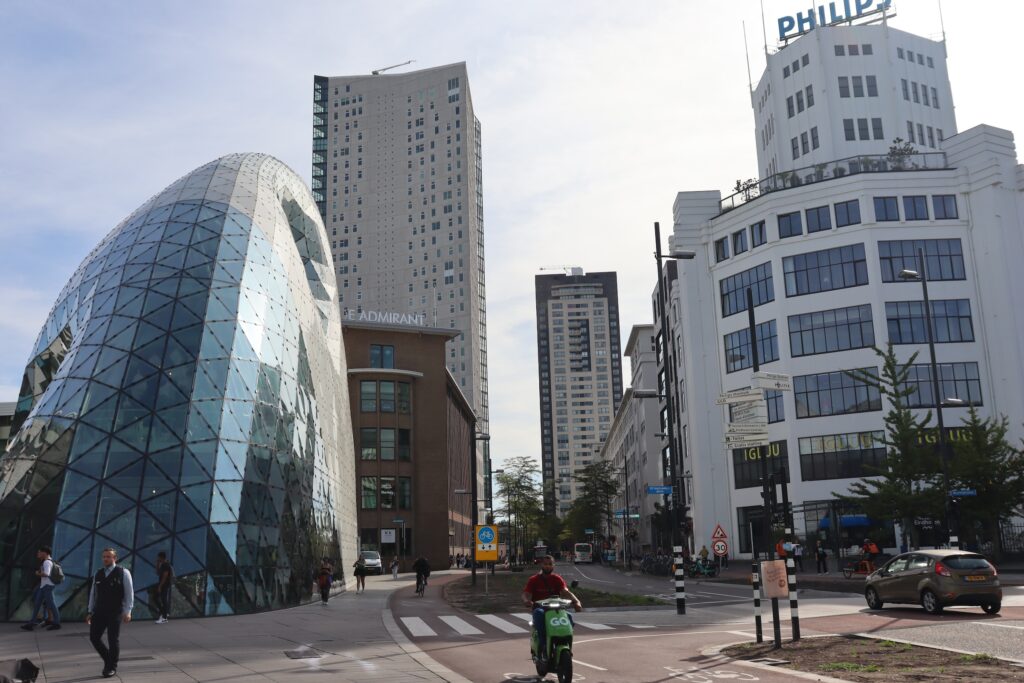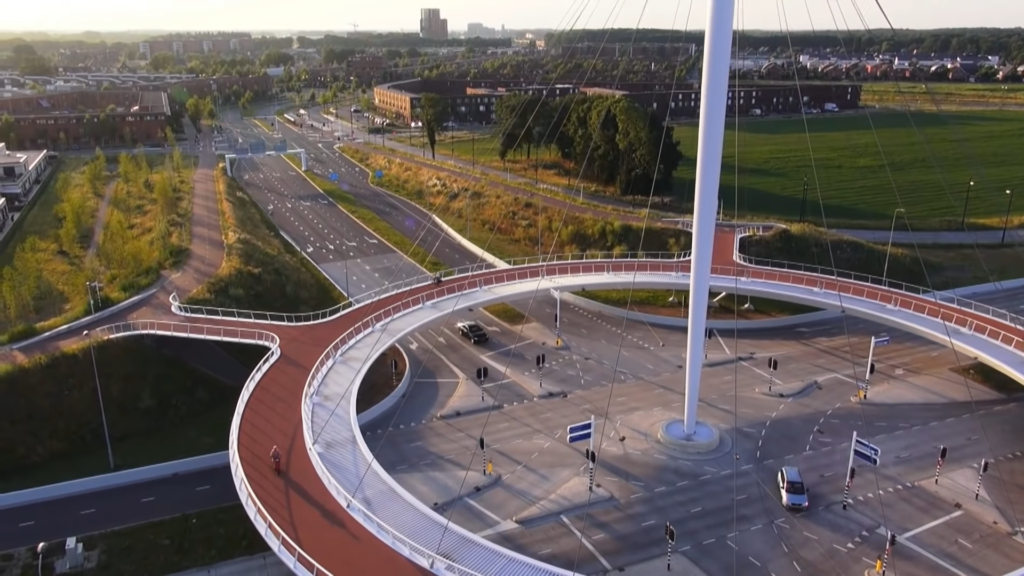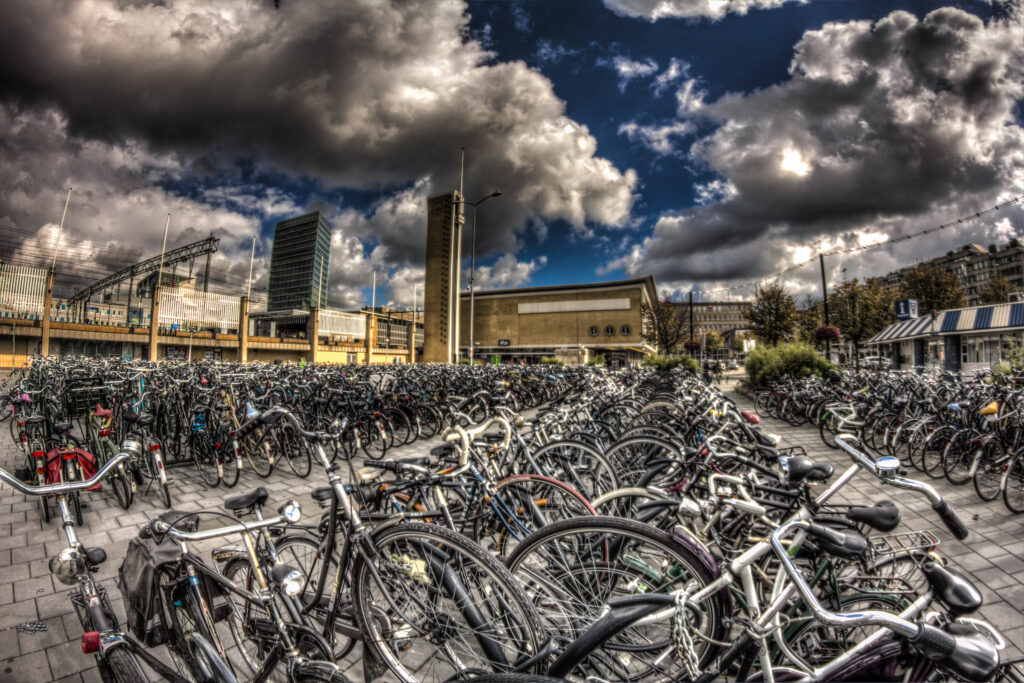This website uses cookies so that we can provide you with the best user experience possible. Cookie information is stored in your browser and performs functions such as recognising you when you return to our website and helping our team to understand which sections of the website you find most interesting and useful.
Eindhoven – ambitious and precise, but not radical

Eindhoven is one of the cities with the longest history of systemically restricting transport pollution. However, those who think that today, only EVs and hydrogen power cars can drive in its city centre, are in for a big surprise. Currently, restrictions apply to… trucks and buses only! Thus far, passenger cars have not been subject to any entry regulations – although that will soon change.
Eindhoven introduced the first Low Emission Zone as early as 2007, and subsequently slowly expanded it, until it reached its current size of ca 13 square kilometers in the city centre. What is most interesting, though, is that the authorities focused not on road traffic as a whole, but on trucks and buses. Today, the so-called environmental zone in Eindhoven is accessible only to vehicles which meet the newest Euro 6 emissions norm, established in 2014. What are the effects of such an approach? Several dozen of modern trucks that meet the norm emit as much pollutions as a single vehicle from last century. One only needs to recall the sight of a dilapidated old truck starting at the traffic lights in a cloud of black smoke to understand the massive benefits this solution brings to the people and the environment.
What about passenger cars, then? Nothing, it turns out. To this day, in Eindhoven there have been no restrictions on their movement.

(photo: Alicja Ziajowska on Unsplash)
Find causes and optimal solutions
Why did Eindhoven take this surprising – at least on the face of it – road? Because the authorities, rather than apply a single tool to all issues, analyzed the situation and chose diverse solutions, appropriate for the root cause of a given problem. It was decided to first restrict the movement of the most polluting and at the same time most intensively exploited vehicles – trucks and buses.
Meanwhile, work started on remodeling the space previously available to all motor vehicles and “rerouting” the inhabitants to public transport, bicycles etc. The space that was reclaimed in this way – previously built and developed with car transport in mind – was used to increase the comfort of pedestrians and cyclists, as well as to expand greenery. It is worth emphasizing yet again: no bans on entry for passenger cars were introduced – instead the approach was based on changing the environment (by restricting the spaces intended for use by cars in favour of pedestrians and cyclists) in order to change bahaviour.

(photo: Nanda Sluijsmans on Wikimedia Commons)
As a result of such a mixture of tools, although the 13-square kilometer zone takes up only ca. 15 percent of Eindhoven, the city of 240 000 inhabitants has… 300 000 bicycles. 10 000 cyclists per day use the most popular bike route. On can conveniently ride through the entire metropolitan area on a bike, as the cycling infrastructure has recently been significantly expanded. A symbol of the Eindhoven metropolitan area is the famous “suspended roundabout” for cyclists, called Hovenring – built in the city of Veldhoven, a part of the area, over a regular roundabout for motor vehicles. Statistics show that in Eindhoven, bikes take precedence over cars: they are the most popular means of transport there.

(photo: ipv Delft on YouTube)

(photo: ipv Delft on YouTube)
18 years later, or time for passenger cars
Is this enough? No, but for the inhabitants of Eindhoven, the first serious change with regards to their private passenger cars will take place only in 2025. From this point on, diesel cars with emission norms lower than Euro 5 will not be able to enter the zone. In subsequent years, restrictions will also apply to vehicles with petrol engines. Starting in 2025, only zero-emission trucks and busses will be allowed in the zone. The way the zone is monitored will also change – today, it is based on ad hoc controls, but in time it will be automatized and use cameras, either in fixed spots or on patrol cars (similarly to Warsaw controls cars in paid parking zones).

(photo: Lennart Tange on Flickr)
Goal for 2030 – zero emission zone
The changes that are gathering speed are aimed at one thing – Eindhoven wants all of the transport in its city centre to be zero-emission in 2030. Even though there are still 7 years left, all the steps are already thoroughly planned – which social groups to engage in social dialogue, when to do so and what the topics of conversation should be. For city authorities, i.a. communication with small entrepreneurs who may face problems with transport and access to services as a consequence of the planned restrictions. Several scenarios are considered, including issuing time-limited passes to the zone until the purchase of a new vehicle and support programs for companies who want to maintain competitiveness while functioning in the future zero-emission zone.
Valuable conclusions
There are two main takeaways from the story of Eindhoven. Restrictions have been applied to the most polluting vehicles first. Secondly, inhabitants first received a complete alternative to car traffic (bike infrastructure), and passenger cars will only be subject to restrictions after they have had the time to change their transport habits.
(header photo: ipv Delft on YouTube)
